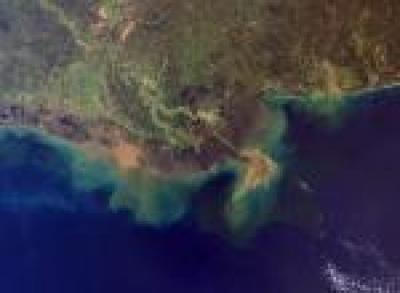Ranking hot spots of human impact on coastal areas
Coastal ecosystems around the world are threatened by the impact of human activities - this is the result of a new published study by scientists at the University of California in Santa Barbara (UCSB). here in the Journal of Conservation Letters. The authors have conducted comprehensive analyzes of coastal areas around the world.
'Conservation and management of water resources in coastal areas must address the effects of human activities, from land, such as urban flows or forms of pollution, and also from the sea. ' Benjamin S. Halpern, the lead author of the study, is currently working at the National Center for Ecological Analysis and Synthesis (NCEAS) at UCSB University.
'One of the great challenges is deciding how and where to allocate limited resources to solve these problems,' he said. 'The results of our research allow us to identify the places most threatened by land actors - places we call land-based hotspots - and where the sources are. This action is small or can be temporarily ignored. '
The hottest point to mention is the Mississippi River mouth, Halpem explains, the rest of the top 10 hotspots are located in Asia and the Mediterranean region.'There are areas where every conservation effort will become meaningless if they do not directly address the bad effects people are causing along the upstream to the river mouth.'
 The outstanding hot spot of human impact on coastal ecosystems is the Mississippi River. Photos taken from the universe. (Source: NASA)
The outstanding hot spot of human impact on coastal ecosystems is the Mississippi River. Photos taken from the universe. (Source: NASA)
Nutrient flow from upstream farms has created a 'dead zone' in the Gulf of Mexico where the Mississippi River flows. This dead sea forms due to overgrowth of algae through the above nutrient source and drains most of the oxygen in the water.
The authors say they have provided the first in-depth analysis for all coastal regions of the world. They surveyed four main causes of ecological change:
- Nutritional source from agricultural cultivation
- Organic pollution from pesticides
- Inorganic pollution from urban flows
- Direct human impact on coastal living environment
Halpern explained that most of the world's coastlines only have to experience a very small part of what happens inland - nearly half of the coastline and more than 90% of coastal countries are in this area.'This is because most of the impacts of the land only focus on a few large rivers, thus affecting only a small amount of coastal areas'.
Halpern said: 'In these areas, where there is little impact from human activity on the ground, marine conservation can and should be focused primarily on what happens on the ocean. Examples include: fishing, climate change, invasive species, and commercial shipping. '
Other scientists from NCEAS also participated in this work: Colin M. Ebert, Carrie V. Kappel, Matthew Perry, Kimberly A. Selkoe, and Shaun Walbridge. In addition, Fiorenza Micheli from Stanford University and Elizabeth MP Madin from the Department of Ecology at the University of California at Santa Barbara are co-authors of the study.
NCEAS is funded by the National Science Foundation (NSF). At the same time, the David & Lucile Foundation, the National Marine Reserve, and the NSF Graduate Research Society also provided additional funding for research.
- Tsunami awaits to attack the coastal areas of Vietnam
- The ocean is vast but most of the area has been invaded by humans.
- Project to turn desert into ... forest
- Build 120 houses for aquatic species in coastal areas
- Rural or urban: Where is the freshest and most livable place?
- Landslide more than 900ha of land along rivers and coastal areas in Ca Mau
- The Mekong Delta risks being submerged under the sea
- Reveal earthquake 'hot spots' in the world
- Giant black spots appeared on the sun
- Vietnam is supported to adapt to climate change
- 14-year-old girl invented how to eliminate blind spots on cars
- Why do nails have white spots, the reason is simple
 Is the magnetic North Pole shift dangerous to humanity?
Is the magnetic North Pole shift dangerous to humanity? Washington legalizes the recycling of human bodies into fertilizer
Washington legalizes the recycling of human bodies into fertilizer Lightning stone - the mysterious guest
Lightning stone - the mysterious guest Stunned by the mysterious sunset, strange appearance
Stunned by the mysterious sunset, strange appearance